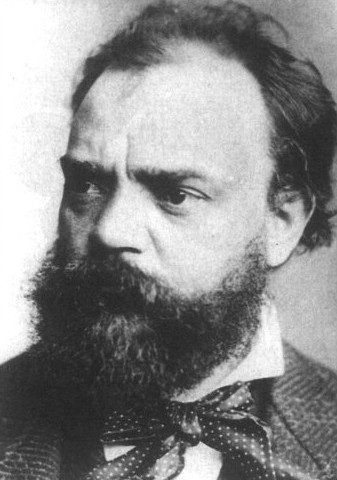|
||
|
In 1884 Dvořák won a prestigious commission for a new work of music from the Royal Philharmonic Society of London, and in December of the same year he began work on his seventh symphony. He worked with speed and enthusiasm on it, declaring to his friends that "it must be capable of stirring the world, and may God grant that it will!". The work was completed on the 17th March 1885. Dvořák travelled in triumph to London to conduct the first performance which took place in St. James' Hall on 22nd April 1885. In addition to being a brilliant composer, Dvořák was a railway enthusiast. He planned his journey from Prague to London himself, and it took just 48 hours. The seventh symphony was begun shortly after the first performance of Brahms third symphony. Dvořák was a friend and a great admirer of Brahms and wanted to write a symphony in the same mould. His work does make use of structural and compositional techniques learned from Brahms, but has a highly original character of its own. The melodic material falls clearly into the Slavonic tradition, and it is worked out using motivic development with flawless musical judgement. The orchestral setting is full of vibrant colour. Dvořák had played viola professionally and had learned the capabilities and colours of all the instruments from his seat in the centre of the orchestra. The symphony opens with a dramatic turbulent movement. The first theme, played quietly by the low strings at the start, is dark and searching. It recurs in many forms as the movement progresses, driving the music on to unseen goals, before it fragments and disappears into an ominous silence at the end. There are contrasting calmer passages, but the air of uncertainty is never far away. The second movement is more serene with a pastoral character typical of Dvořák's work. In places it reaches a profound sadness. He added a note to the manuscript - "from the sad years" - which my have referred to the death of three of his children a few years before. However, he also wrote to a friend that the movement concerned "love, God, and my fatherland" The third movement is a scherzo and trio. The scherzo is lively and dramatic using the rhythms of the polka and the furiant. The trio is a complete contrast reviving the calm pastoral atmosphere of the second movement. The final movement returns to the dramatic mood of the first, but proceeds with more certainty. It is driven forward by a Slavonic march which recurs throughout propelling the work to its final triumphal conclusion. The symphony was aptly summarised by Donald Tovey who wrote: "The solemn tone of the close is amply justified by every theme and every note of this great work, which never once falls below the highest plane of tragic music, nor yet contains a line which could have been written by any composer but Dvorák." Dvořák's Seventh Symphony was performed by the Portobello Orchestra on the 13th July 2013, conducted by Michael Robson-Kiernan. back |
 |
|
